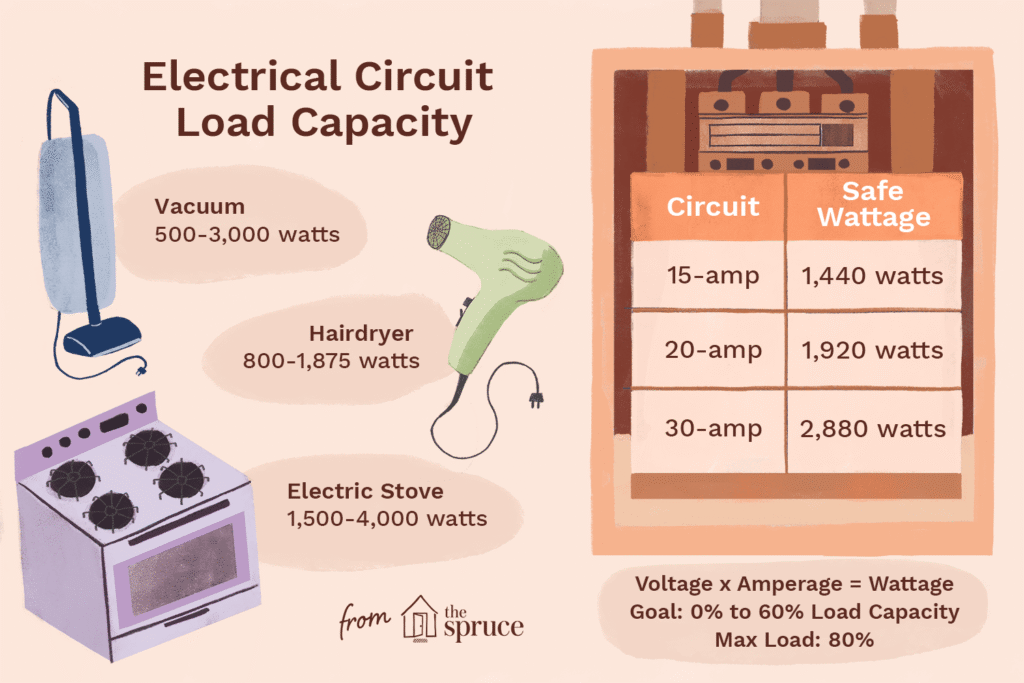
🔌 What is Electrical Capacity?
- Electrical capacity = maximum electricity a circuit, panel, or generator can handle safely.
- Measured in Amperes (Amps).
- Exceeding capacity → risk of tripped breakers, short circuits, or fire.
📊 Typical Electrical Panel Capacities by Home Age
- Before 1950 → ~30 Amps (knob-and-tube, fuses).
- 1950s–1960s → ~60 Amps.
- 1960–1980 → ~100 Amps.
- 1980 onwards → 200 Amps minimum.
- Large modern homes → 400–800 Amps.
⚡ The electrical panel is the home’s main power hub, distributing power to branch circuits and protecting with circuit breakers.
⚖️ Capacity vs. Load
- Capacity = maximum allowed.
- Load = actual electricity being used.
- Safe rule: Don’t exceed 80% of circuit/panel capacity.
📐 Key Formulas
- Volts × Amps = Watts
- Amps = Watts ÷ Volts
Example:
- 20A × 120V = 2,400W capacity → safe load = 1,920W (80%).
- 100A × 240V = 24,000W capacity → safe load = 19,200W.
Example Electrical Loads
| Total Capacity for a 1500 square foot home (at 80% use) | 38,400W |
| Lighting Circuit (at 3W per square foot) | 4,500W |
| Heat Pump | 5,500W |
| Air Conditioner | 3,000W |
| Microwave | 1,000W |
| Dishwasher | 1,800W |
| Stove (per burner) | 1,500W |
| Oven | 4,000W |
| Laundry Circuit (washer and dyer) | 3,500W |
| Outlets (each) | 2,400W |
🏠 Example Load Calculation (1,500 sq. ft. home, 200A panel)
- Total safe capacity = 200A × 240V × 0.8 = 38,400W
- Typical loads:
- Lighting → 4,500W
- Heat pump → 5,500W
- A/C → 3,000W
- Stove (per burner) → 1,500W
- Oven → 4,000W
- Dishwasher → 1,800W
- Laundry (washer + dryer) → 3,500W
- Outlets (each) → 2,400W
⚡ Not all appliances run at the same time → actual load is usually lower.
📋 Best Practices for Electricians
- Always calculate total branch circuit + appliance load.
- Keep total ≤ 80% of panel capacity.
- Label circuits clearly in the panel.
- Use correct wire gauge for the load.
- For large loads (A/C, oven, dryer) → dedicate separate circuits.
- If load exceeds panel → recommend upgrade to client.
🛠️ When to Call a Professional
- Old or unknown capacity panels.
- Frequent breaker trips.
- Homeowners planning major upgrades (EV chargers, HVAC, solar, etc.).

